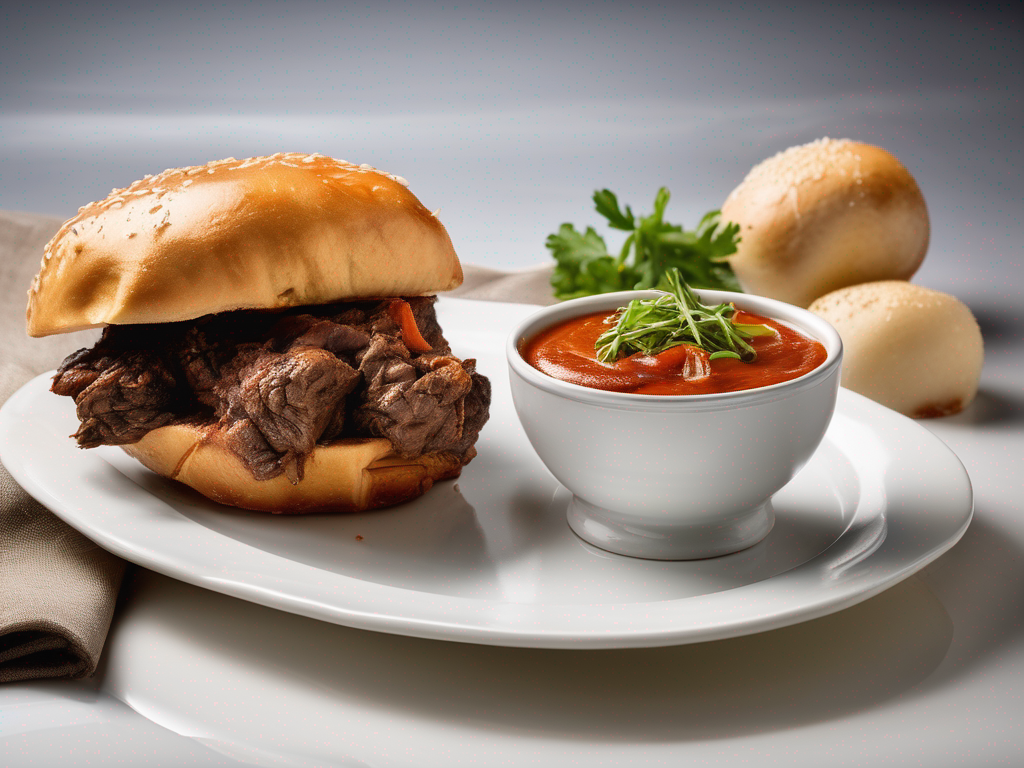
Proper Storage of Buffalo Meat to Extend Its Shelf Life
Get Your Free Food Safety Cheat Sheet
30 most common foods with instant answers. Print it and stick it on your fridge—completely free!
Proper Storage of Buffalo Meat to Extend Its Shelf Life
Buffalo meat, also known as bison meat, is a lean and flavorful protein source that is becoming increasingly popular in the culinary world. To ensure the quality and safety of buffalo meat, proper storage is essential. In this blog post, we will discuss how you can store buffalo meat correctly to extend its shelf life and maintain its freshness. (Buffalo)
Understanding Buffalo Meat
Before diving into the storage techniques, let's briefly discuss buffalo meat and its unique characteristics:
What makes buffalo meat different?
- Leaner than beef: Buffalo meat is known for being leaner than traditional beef, making it a healthier protein option.
- Rich flavor: Buffalo meat has a rich, slightly sweet flavor that sets it apart from other types of meat.
- Nutrient-dense: Buffalo meat is a good source of protein, iron, and other essential nutrients.
Proper Storage Techniques
Proper storage is crucial to maintaining the quality and safety of buffalo meat. Here are some tips to help you store buffalo meat effectively:
1. Refrigeration
- Store buffalo meat in the coldest part of the refrigerator, typically the back of the bottom shelf.
- Keep buffalo meat in its original packaging or repackage it in airtight containers or freezer bags.
- Use the meat within 3-5 days if stored in the refrigerator.
2. Freezing
- If you are not planning to use the buffalo meat within a few days, consider freezing it.
- Wrap the meat tightly in freezer paper or aluminum foil to prevent freezer burn.
- Label the packages with the date to keep track of the storage time.
- Frozen buffalo meat can last up to 6-12 months if properly stored.
3. Thawing
- When thawing buffalo meat, do so in the refrigerator or using the defrost setting on the microwave.
- Avoid thawing meat at room temperature to prevent bacterial growth.
- Once thawed, cook the meat promptly to maintain its quality.
4. Safety Precautions
- Always wash your hands and surfaces thoroughly before and after handling buffalo meat to prevent cross-contamination.
- Cook buffalo meat to the recommended internal temperature to kill any harmful bacteria.
- Avoid refreezing thawed buffalo meat to maintain its texture and flavor.
Additional Tips for Storage
In addition to the basic storage techniques, here are some additional tips to help you extend the shelf life of buffalo meat:
- Marinating: Marinating buffalo meat before cooking can enhance its flavor and tenderize the meat.
- Vacuum sealing: Consider investing in a vacuum sealer to remove excess air and prolong the shelf life of buffalo meat.
- Divide into portions: Divide large cuts of buffalo meat into smaller portions before freezing to make it easier to thaw only what you need.
Conclusion
Proper storage of buffalo meat is essential to maintain its quality, flavor, and safety. By following the tips outlined in this blog post, you can ensure that your buffalo meat stays fresh and delicious for an extended period. Whether you choose to refrigerate or freeze the meat, always prioritize safety and hygiene to enjoy the unique taste of buffalo meat in your meals. Remember, with the right storage techniques, you can savor the goodness of buffalo meat for months to come.
For more information on buffalo meat and other food-related topics, visit buffalo. (Buffalo)
Authoritative Food Safety References
These agencies and university labs inform every tip and health precaution we publish.
USDA FoodKeeper – Cold Storage Guidelines
Official refrigerator, freezer, and pantry timelines maintained by the U.S. Department of Agriculture.
Visit USDA FoodKeeperFDA Produce Safety Rule & Grower Guidance
Field-to-fridge handling practices that prevent contamination of fruits, vegetables, and leafy greens.
Visit FDA Produce SafetyCDC Foodborne Illness Prevention Hub
Surveillance-backed guidance on pathogens, symptoms, and steps to reduce foodborne illness risk.
Visit CDC Food SafetyUC Davis Postharvest Technology Center
University research detailing optimal storage atmospheres for produce after harvest.
Visit UC Davis PostharvestPenn State Extension – Home Food Preservation & Safety
Peer-reviewed extension bulletins on safe canning, chilling, and reheating practices.
Visit Penn State ExtensionGet Your Free Food Safety Cheat Sheet
30 most common foods with instant answers. Print it and stick it on your fridge—completely free! Want more? Upgrade to the complete guide with 70+ foods.
Scan your food directly and get instant safety info using our AI-powered camera feature.